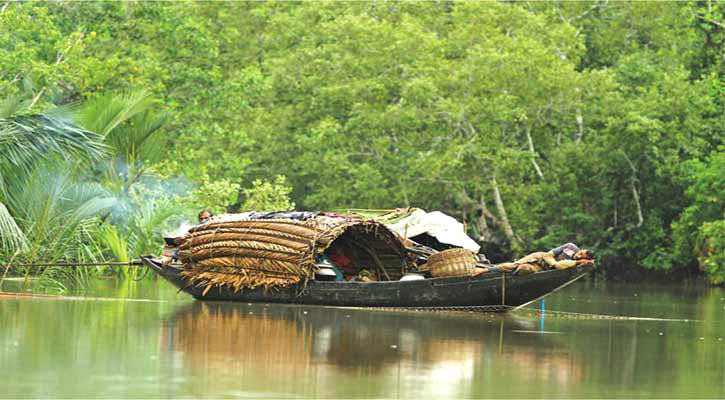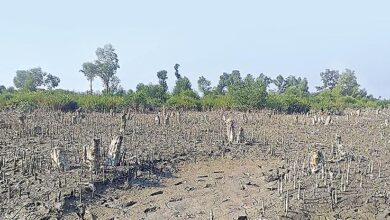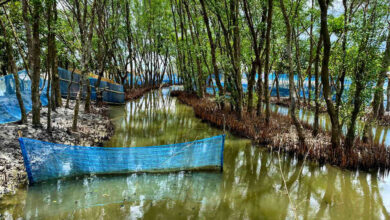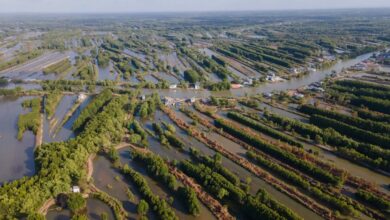While February 14 is celebrated worldwide as Valentine’s Day, the coastal communities of Bangladesh observe it as “Sundarbans Day.” For over two decades, this special day has been dedicated to raising awareness about protecting the Sundarbans, the world’s largest mangrove forest and a vital natural shield against climate disasters.
The tradition began in 2001 when the first National Sundarbans Conference was held under the Bangladesh Environmental Movement (BAPA), with participation from Khulna University and 70 other environmental organizations. The conference declared February 14 as Sundarbans Day, and since then, it has been observed every year. This year marks the 25th celebration of the occasion.

Awareness Programs Across Coastal Regions
To honor this day, Sundarbans Academy in Khulna has planned several programs, including seminars, rallies, signature campaigns, painting competitions, bicycle rallies, human chains, and photography contests. Awareness activities will also take place in 17 sub-districts across five coastal districts identified as impact zones of the Sundarbans.
The theme for this year is “Love Sundarbans on the World’s Day of Love.” According to Professor Anwarul Kadir, Executive Director of Sundarbans Academy, the day’s main event will be held at Khulna Press Club in collaboration with the Forest Department. A key focus will be creating public awareness about protecting Sundarbans from plastic pollution and other environmental threats.

A Call for Official Recognition of Sundarbans Day
Professor A. B. M. Abdul Malek, Coordinator of the Sundarbans Protection Movement, has urged the government to recognize February 14 as an official Sundarbans Day. He emphasized that while the Sundarbans play a crucial role in Bangladesh’s survival, increasing salinity, illegal poaching, deforestation, and harmful fishing practices continue to threaten this fragile ecosystem. He called on the Forest Department and the government to take strong, practical measures to protect the forest.
The Vital Role of Sundarbans in Coastal Protection
People living in coastal regions understand the importance of Sundarbans better than anyone. Bidyesh Ranjan Mridha, a lecturer from Kapotakkho College in Koyra, said, “Without the Sundarbans, disasters would have wiped out Koyra long ago. To protect our own future, we must save the Sundarbans. Reducing pressure on the forest and creating alternative livelihoods for local communities is crucial.“
Illegal activities inside the forest, such as poaching and piracy, have also become a significant concern. Azizul Islam, a resident of Bedkashi village, said, “Forest crimes, such as deer and tiger poaching, are on the rise. Today, on Sundarbans Day, we urge the authorities to take immediate action to eliminate these threats.“
The Rich Biodiversity of Sundarbans
According to the Forest Department, the Bangladesh part of the Sundarbans covers 6,017 square kilometers and is home to:
- 528 plant species
- 505 wildlife species, including
- 49 mammals
- 87 reptiles
- 14 amphibians
- 355 bird species
As per the 2023 wildlife survey, Sundarbans is home to:
- 136,604 spotted deer
- 152,444 monkeys
- 47,515 wild boars
- 25,124 monitor lizards
- 12,241 porcupines
The most recent 2024 survey confirms the presence of 125 Bengal tigers.

The Need for Stronger Conservation Efforts
Mihir Kumar Doe, Conservator of Forests (Khulna region), stressed that the Sundarbans are critical to Bangladesh’s environment and climate resilience. He said,
“We must protect this natural shield at all costs and stop all activities that harm the Sundarbans. While the Forest Department is actively working to prevent forest crimes, protecting Sundarbans requires mass awareness and collective action.”
A Shared Responsibility
The Sundarbans are not just a forest; this is Bangladesh’s lifeline. Without this mangrove shield, the country would face devastating climate disasters, endangering millions of lives. As communities, organizations, and policymakers come together on Sundarbans Day, the message is clear—love for nature must translate into action.
By ensuring sustainable conservation efforts, promoting eco-friendly policies, and providing alternative livelihoods for local communities, Bangladesh can safeguard the Sundarbans for generations to come.





